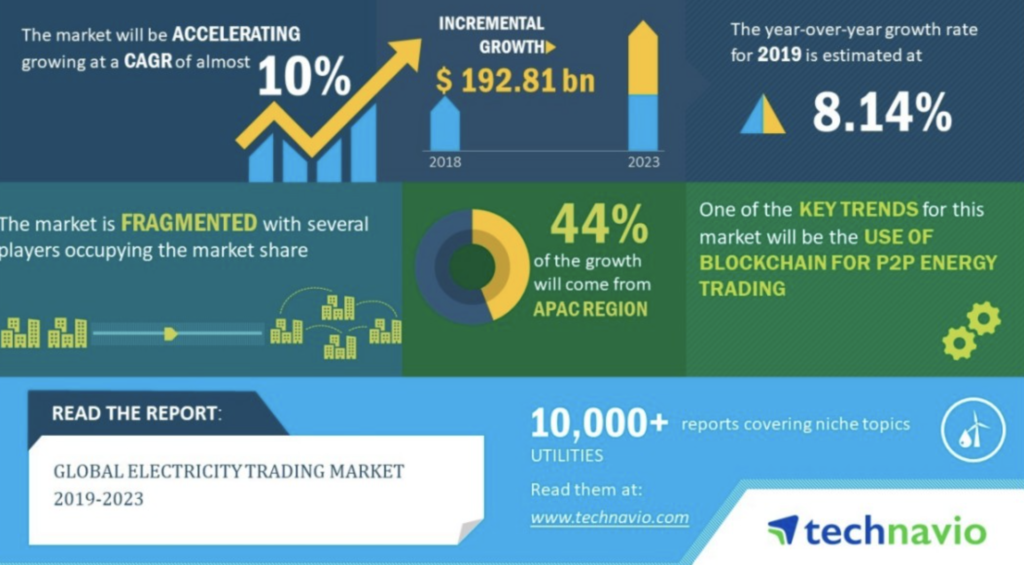Power trading is the buying and selling of electricity in various markets, with the aim of making a profit. This activity facilitates the movement of electricity from where it is generated to where it is consumed, and is an essential part of the electricity market. In power trading, electricity is bought and sold based on the laws of supply and demand, and prices are determined by various factors such as weather conditions, fuel prices, and government policies.
Power trading is a dynamic and exciting field that requires a deep understanding of the energy industry, financial markets, and economic principles. Successful power traders need to have a keen eye for market trends, a solid understanding of risk management, and the ability to analyze and interpret large amounts of data.
In this blog article, we will explore the world of power trading in greater detail, examining the different types of power markets, the role of power traders, and the factors that impact electricity prices. We will also discuss the challenges and opportunities in power trading and highlight some of the key skills needed to succeed in this field. Whether you are a seasoned investor or simply interested in learning more about the electricity market, this article is sure to provide valuable insights into the fascinating world of power trading. So, let’s dive in!
What is Power Trading?
Let’s start with an example to explain what power trading is. Imagine that there is a power plant in the north of the United States that generates excess electricity, but the demand for electricity in that region is relatively low. Meanwhile, there is a high demand for electricity in the south of the country due to a heatwave. Rather than letting that excess electricity go to waste, the power plant can sell it to a power trading company, which can then sell it to a buyer in the south of the country. This allows the power plant to make a profit on its excess electricity, and the buyer in the south to get the electricity they need to meet their demand.
Power trading is an essential activity that allows electricity to be bought and sold across regions, countries, and even continents. It enables generators to sell their excess electricity to buyers who need it, and allows for a more efficient use of the available resources. By facilitating the movement of electricity to where it is needed, electricity trading helps to ensure a stable and reliable supply of electricity, which is crucial for modern societies.
Moreover, power trading can help to reduce the cost of electricity for consumers, as it promotes competition and increases efficiency in the electricity market. For example, in a deregulated electricity market, power traders can buy electricity from different generators and sell it to consumers at a lower price than the local utility company. This can lead to lower electricity bills for consumers and provide them with more choices.
In addition, power trading can also help to promote the use of renewable energy sources, as it allows for the movement of green electricity from areas with abundant renewable resources to areas with high demand. This can help to reduce greenhouse gas emissions and promote a more sustainable energy system.
In fact, electricity trading is an essential activity that allows for the efficient movement of electricity from where it is generated to where it is needed. It promotes competition, increases efficiency, and can lead to lower costs for consumers. Furthermore, it can help to promote the use of renewable energy sources and contribute to a more sustainable energy system. Overall, electricity trading provides numerous benefits and advantages, and it is an important aspect of the modern electricity market. Also, look at the stats:

The question that arises is: what are the specific benefits and advantages of power trading in different regions and under different market structures?
Benefits And Disadvantages of Power Trading
Power trading is a vital component of the modern electricity market, providing numerous benefits and advantages to both producers and consumers. One of the primary benefits of power trading is increased efficiency. By allowing the movement of electricity from areas of excess production to areas of high demand, power trading promotes a more optimal use of resources, reducing waste and increasing productivity.
Moreover, it can help to manage the risks associated with electricity generation and consumption. Power plants can sell their excess electricity to power trading companies, reducing the risk of overproduction and increasing their revenue. Electricity trading also enables the movement of electricity across borders, facilitating international trade and cooperation. This can lead to increased economic development, job creation, and technological innovation.
However, there are also some potential disadvantages associated with electricity trading. Here are a few:
- Volatility and price uncertainty: Power prices can be highly volatile and subject to sudden price spikes or drops due to changes in supply and demand or other market factors. This can make it challenging to predict future prices and manage risk effectively.
- Market manipulation: There is a risk of market manipulation in electricity trading, where large players with market power can influence prices to their advantage. This can harm smaller participants and lead to inefficient market outcomes.
- Transmission constraints: Electricity trading can be constrained by transmission capacity limitations, which can limit the ability to move power from areas of surplus to areas of demand. This can lead to price disparities between different regions and limit the benefits of power trading.
- Regulatory complexity: Power trading is subject to a complex regulatory framework that can vary from region to region. Compliance with these regulations can be time-consuming and costly, especially for smaller players in the market.
- Environmental concerns: Electricity trading can have environmental impacts, such as increased greenhouse gas emissions from the use of fossil fuels or impacts on wildlife from the development of new transmission infrastructure.
Conclusion
In conclusion, here’s a table comparing power trading with other types of trading:
| Trading Type | Definition | Examples | Market Characteristics |
|---|---|---|---|
| Power Trading | The buying and selling of electricity on the open market | Buying electricity from a power plant and selling it to a local utility company or industrial consumer | Highly regulated, with strict reliability and safety requirements; often conducted through centralized marketplaces or bilateral contracts |
| Stock Trading | The buying and selling of shares of ownership in publicly traded companies | Buying shares of a company such as Apple or Amazon and selling them for a profit | Highly volatile, with prices influenced by a wide range of economic, political, and social factors; often conducted through stock exchanges or electronic trading platforms |
| Commodity Trading | The buying and selling of raw materials such as oil, natural gas, or metals | Buying a barrel of oil and selling it to a refinery or industrial consumer | Highly sensitive to supply and demand dynamics, with prices influenced by global economic conditions, geopolitical factors, and weather patterns; often conducted through commodity exchanges or over-the-counter markets |
| Foreign Exchange Trading | The buying and selling of currencies from different countries | Buying euros with US dollars and then selling them back at a profit | Highly liquid, with prices influenced by a wide range of economic and political factors; often conducted through electronic trading platforms or over-the-counter markets |
As the table shows, power trading has some unique characteristics compared to other types of trading. It is highly regulated and subject to strict reliability and safety requirements, due to the critical nature of the electricity system. It is also often conducted through centralized marketplaces or bilateral contracts. However, power trading shares some similarities with other types of trading, such as its sensitivity to supply and demand dynamics and the importance of risk management strategies. Overall, power trading plays a crucial role in the modern energy system, and its characteristics and benefits set it apart from other types of trading.
In conclusion, power trading has become an essential component of the modern electricity market, contributing to increased efficiency, lower costs for consumers, and more sustainable energy use. Power trading has demonstrated impressive performance, with significant growth in trading volume, and an increasing number of participants from both the traditional utility sector and the emerging renewable energy industry. The power trading market has become more complex and competitive, with advanced trading technologies, innovative market designs, and new financial instruments such as renewable energy credits. However, power trading also faces challenges, such as managing the risks associated with the volatile and unpredictable nature of electricity markets, addressing regulatory and policy issues, and ensuring the reliability and safety of the electricity system. Overall, power trading’s performance reflects its importance in enabling the transition to a cleaner, more efficient, and sustainable energy system, and its continued growth and evolution are likely to be critical for achieving these goals.
n.b: this is not financial advice
